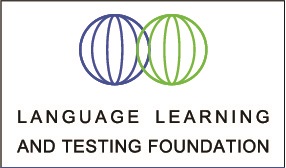References and Resources
If you would like to learn more about language learning aptitude, and the part it plays in the second language testing and teaching community today, you may find the following articles and publications helpful.
American Educational Research Association. (2006). Foreign Language Instruction: Implementing the Best Teaching Methods. Research Points, 4(1). https://files.eric.ed.gov/fulltext/ED491588.pdf
Carroll, J. B. (1981). Twenty-five years of research on foreign language aptitude. In K. C. Diller (Ed.), Individual differences and universals in language learning aptitude, (p.83-118). Rowley, MA: Newbury House.
Carroll, J. B. & Sapon, S. (2002). Modern Language Aptitude Test: Manual 2002 Edition. N. Bethesda, MD: Language Learning and Testing Foundation.
Carroll, J. B. & Sapon, S. (2002). Modern Language Aptitude Test – Elementary: Manual, 2002 Edition. Rockville, MD: Language Learning and Testing Foundation.
Child, J. R. (1998). Language aptitude testing: Learners and applications. Applied Language Learning, 9(1&2), 1-10.
Madaus, J. W. (2003). What high school students with learning disabilities need to know about college foreign language requirements. Teaching exceptional children, 36(2), 62-66.
Ehrman, M. (1994, Sept.). A study of the Modern Language Aptitude Test for predicting learning success and advising students. Paper presented at Language Aptitude Invitational Symposium. Arlington, VA. https://pdfs.semanticscholar.org/4993/5be5efc6a2cdc2286174dd2920747b3104e0.pdf?_ga=2.269054515.355764684.1585947646-1731301872.1585947646
Ehrman, M. E. ( 1996). Understanding second language learning difficulties. Thousand Oaks, CA: Sage Publications, Inc.
Ehrman, M. (1998). The Modern Language Aptitude Test for predicting learning success and advising students. Applied Language Learning, 9(1&2), 32-71.
Gajar, A. H. (1987). Foreign language learning disabilities: The identification of predictive and diagnostic variables. Journal of Learning Disabilities, 20(6), 327-330. http://citeseerx.ist.psu.edu/viewdoc/download?doi=10.1.1.843.7936&rep=rep1&type=pdf
Genessee, F & Hamayan, E. (1980). Individual differences in second language learning. Applied Psycholinguistics, 1, 95-110. Individual Differences in Second Language Learning
Lowe, P. Jr. (1998). Zero-Based language aptitude test design: Where’s the focus for the test? Applied Language Learning, 9(1&2), 11-31. Zero-Based language aptitude test design: Where’s the focus for the test?
McGuire, J. M. & Scott, S. S. (2005). Review of Carroll, J. B. & Sapon, S. M. (2002 ed.). Modern Language Aptitude Test (MLAT). N. Bethesda, MD: Language Learning and Testing Foundation. Journal of Psychoeducational Assessment, 23, 96-104.
Natelson, E. R. (1975). The predictive validity of each of the five parts of the Modern language Aptitude Test; The effect of previous language training on MLAT scores; The correlation of MLAT scores and achievement in specific language groups. Unpublished doctoral dissertation, Georgetown University, Washington, DC.
Pimsleur, P., Reed, D. J. & Stansfield, C. W. (2004). Pimsleur Language Aptitude Battery: Manual, 2004 Edition. N. Bethesda, MD: Language Learning and Testing Foundation.
Pimsleur, P., Sundland, D.M. & McIntyre, R.D. (1963). Under-Achievement in Foreign Language Learning: Final Report. Columbus, OH: The Ohio State University Research Foundation. https://files.eric.ed.gov/fulltext/ED018160.pdf
Reed, D. J. & Stansfield, C. W. (2004). Using the Modern Language Aptitude Test to identify a foreign language learning disability: Is it ethical? Language Assessment Quarterly, 1(2&3), 161–176. Using the Modern Language Aptitude Test to Identify a Foreign Language Learning Disability:Is it Ethical?
Reed, D. J. & Stansfield, C. W. (2002, May). The use of the Modern Language Aptitude Test in the assessment of foreign language learning disability-What’s at stake? Paper presented at Language Assessment Ethics Conference, Pasadena, CA.
Skehan, P. (1998). A cognitive approach to language learning. Oxford: Oxford University Press. https://escholarship.org/uc/item/3s25j29j
Smith, M. & Stansfield, C.W. (2017). Testing aptitude for second language learning. In E. Shohamy & L. Or (eds.), Language Testing and Assessment, Encyclopedia of Language and Education, 3rd Edition. New York: Springer. DOI 10.1007/978-3-319-02326-7_5-1
Sparks, R., Javorsky, J., Patton, J. and Ganschow, L. (1998). Factors in the prediction of achievement and proficiency in a foreign language. Applied Language Learning, 9(1&2), 72-107.
Stansfield, C. W. (1989). Language Aptitude Reconsidered. Washington DC: ERIC Clearinghouse on Languages and Linguistics, 1989. http://www.ericdigests.org/pre-9215/language.htm
Stansfield, C.W. & Reed, D.J. (2018). Looking back on 60 years of the MLAT. In Zhisheng (Edward) Wen, Peter Skehan, & Richard Sparks (Eds.). Rethinking language aptitude: Contemporary insights and emerging trends. New York: Taylor & Francis/Routledge.
Stansfield, C. W. & Reed, D. J. (2005). Modern Language Aptitude Test – Elementary: Spanish Version, 2005 Edition. Rockville, MD: Language Learning and Testing Foundation.
Steinman, L. & Smith, M. (2001). Review of Carroll, J. B. & Sapon, S. M. (1959). Modern Language Aptitude Test and manual (MLAT). San Antonio, TX: The Psychological Corporation. The Canadian Modern Language Review, 58(2), 307-312.
Wesche, M. (1981). Language aptitude measures in streaming, matching students with methods, and diagnosis of learning problems. In K. Diller (Ed.), Individual Differences and Universals in Language Aptitude. Rowley, MA: Newbury House.
Wesche, M., Edwards, H & Wells, W. (1982) Foreign language aptitude and intelligence. Applied Psycholinguistics, 3, 127-140.
 Language Learning and Testing Foundation
Language Learning and Testing Foundation